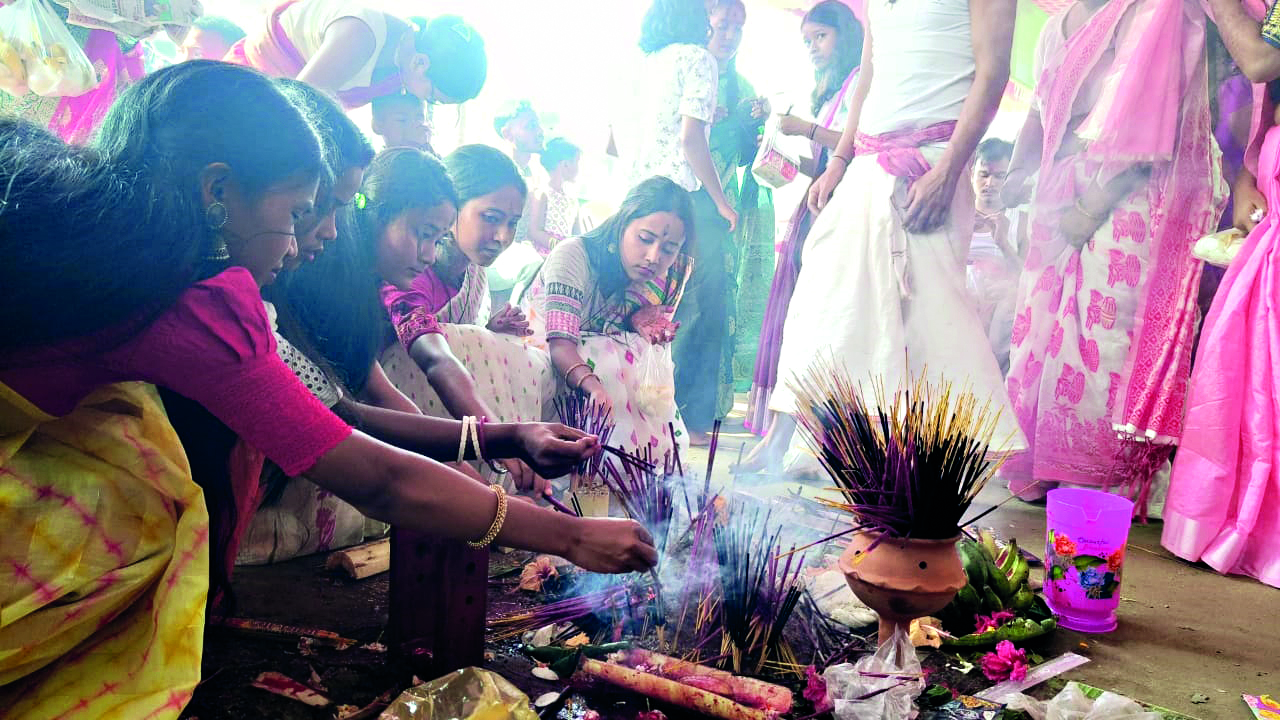With the end of Durga Puja, Vandani Puja commences in North Bengal

Jalpaiguri: With Durga Puja coming to an end with Dashami (the 10th day,) rural North Bengal comes alive with the unique Vandani Puja. Though this unique tradition is deeply rooted in the Rajbanshi community, other communities have also embraced this Puja, across the region.
The Puja is observed on Ekadashi Tithi, the day after Dashami, in some places, while in others it is performed on Dwadashi Tithi. Like Durga, the goddess here is often depicted with ten arms, though in some areas she is shown with four. Notably, there is no Asura beneath her feet; instead, the goddess is seen seated on a tiger, accompanied by deities Lakshmi, Saraswati, Kartik and Ganesha.
On Monday, this traditional puja was organized in the Barnish Gram Panchayat area of Maynaguri block in Jalpaiguri, as well as in the Vandani area of Gadheyarkuti Gram Panchayat in Dhupguri block. Locals reveal that this Puja has been a significant part of their culture for over a hundred years.
Bimal Chandra Roy, a 63-year-old resident of Gadheyarkuti, shared: “I remember my grandfather performing this Puja and it started even before his time. People from various communities in North Bengal, not just the Rajbanshis, take part in the festivities. Fairs and cultural events are also held to mark the occasion.” According to local folklore, after the idol immersion on Dashami, Goddess Durga, returning to her abode in Mount Kailasa as a bride, lost her way in the forests of North Bengal during the night.
Hearing her cries, members of the Rajbanshi community rushed to her aid and took her to their village. Durga stayed with them for the night and departed for Kailasa on Ekadashi. Before leaving, she revealed her true identity and blessed the village, ensuring their granaries would always remain full — a blessing that marks the origin of this Puja.



